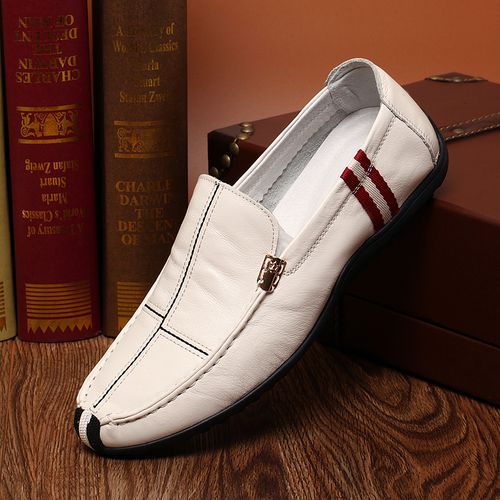
Sri Lanka’s growing economy, driven by a young, urbanized population and a booming tourism sector, presents a promising market for footwear importers. With rising disposable incomes and shifting consumer preferences, businesses sourcing footwear from China can tap into a dynamic landscape where affordability meets style. This article explores Sri Lanka-specific strategies, challenges, and actionable steps to build a successful footwear import business.
—
Why China is a Strategic Partner for Footwear Sourcing
China remains the world’s largest footwear producer, accounting for over 60% of global production, with capabilities tailored to Sri Lanka’s needs:
1. Cost Efficiency: Competitive pricing due to economies of scale and advanced manufacturing techniques, enabling prices 30–50% lower than European suppliers.
2. Diverse Product Range: From lightweight sandals for tropical climates to durable work boots for industrial use, Chinese factories cater to Sri Lanka’s varied consumer demands.
3. Sustainability Innovations: Many manufacturers now use eco-friendly materials (e.g., recycled polyester, biodegradable soles) to align with global trends and Sri Lanka’s environmental policies.
For Sri Lankan importers, China offers a reliable source of high-quality footwear to meet local and regional demand.
—
Sri Lanka’s Footwear Market: Trends and Drivers
Sri Lanka’s footwear sector is valued at $180 million (2023), driven by:
– Tourism Influence: Over 2.5 million tourists visit annually, many seeking affordable, comfortable footwear for cultural and nature tours.
– Urbanization: Colombo’s growing middle class favors trendy, affordable casual wear, while rural markets prioritize durability for agricultural work.
– E-Commerce Growth: Platforms like *Daraz.lk* and *Fern N Foods* are expanding online footwear sales, accounting for 10% of retail revenue.
– Climate-Driven Demand: Lightweight, breathable shoes are in high demand due to Sri Lanka’s tropical climate.
Importing Chinese footwear allows businesses to balance affordability with style in this evolving market.
—
Step-by-Step Guide to Importing Footwear to Sri Lanka
1. Market Research and Supplier Selection
– Identify Niches: Focus on high-demand categories like sports shoes (popular among youth), formal wear (for corporate sectors), or rubber sandals (for monsoon seasons).
– Source Suppliers: Use Alibaba or Global Sources to connect with verified factories. Prioritize suppliers with experience in Southeast Asia and certifications like ISO 9001. Request samples to test durability and design suitability.
2. Compliance and Documentation
– Regulatory Requirements: Ensure products meet Sri Lanka’s standards, including bilingual labeling (English/Sinhala/Tamil), safety certifications (e.g., SLSI), and halal compliance if targeting Muslim-majority regions.
– Customs Procedures: Prepare invoices, packing lists, and certificates of origin. Sri Lanka imposes a 10–15% import duty on footwear, varying by material (e.g., leather vs. synthetic).
3. Logistics and Shipping
– Shipping Routes: Opt for sea freight via Colombo Port, Sri Lanka’s main gateway, with transit times of 25–35 days from Chinese ports like Guangzhou. Consider transshipment through Chennai (India) for cost efficiency.
– Freight Partners: Partner with logistics providers experienced in South Asia to navigate customs delays and last-mile delivery in Sri Lanka’s fragmented retail market.
4. Market Entry Strategies
– Leverage Tourism Channels: Collaborate with hotel chains and tour operators to promote affordable footwear for travelers.
– Local Retail Networks: Partner with distributors in Colombo’s Galle Face Green area or distribute via hypermarkets like *Maxx Value Mart*.
—
Challenges and Solutions
1. Infrastructure Limitations
– Port Congestion: Partner with freight forwarders to expedite customs clearance and avoid delays.
– Power Outages: Plan production timelines to avoid disruptions during quality inspections.
2. Price Sensitivity
– Bundle Deals: Offer discounts on bulk purchases or include accessories (e.g., socks) to add value.
3. Cultural Preferences
– Design Adaptations: Avoid open-toe styles for women in conservative regions. Incorporate vibrant colors and local motifs (e.g., lotus patterns) for cultural resonance.
4. Currency Fluctuations
– LKR Volatility: Hedge risks by pricing in USD or using letter of credit (LC) payments.
—
Future Outlook: Sri Lanka-China Trade Synergies
Sri Lanka’s participation in China’s Belt and Road Initiative (BRI) promises improved connectivity through the Colombo Port City project, which aims to enhance trade efficiency. Key opportunities include:
– Regional Export Hub: Use Sri Lanka as a base to access Maldives and India via preferential trade agreements.
– E-Commerce Expansion: Tap into Sri Lanka’s rising online shopping trends with localized campaigns on platforms like *Shopee Lanka*.
– Sustainability Collaborations: Align with China’s green manufacturing initiatives to qualify for carbon-neutral certifications, appealing to eco-conscious tourists.
—
Final Thoughts
Importing footwear from China to Sri Lanka requires a strategic blend of cost efficiency, cultural adaptability, and regulatory compliance. By prioritizing lightweight designs, compliant standards, and partnerships with local distributors, businesses can capitalize on Sri Lanka’s growing demand. As the country advances toward economic diversification under *Vision 2025*, early movers who combine China’s manufacturing agility with localized insights will thrive in this resilient market.
Article link:https://www.vlefooena.com/manufacturer/3788/

No reply content